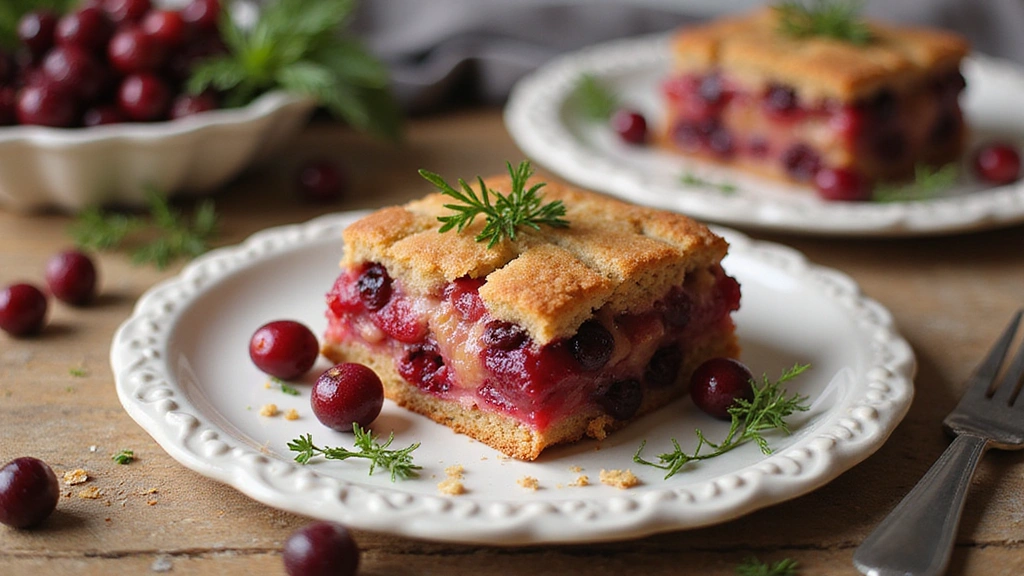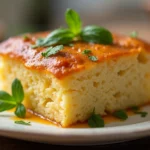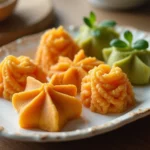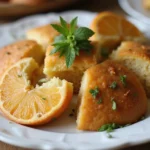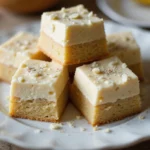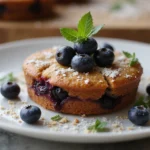Fresh cranberry baking recipes are a delightful way to embrace the vibrant flavors of the season.
The tartness of fresh cranberries perfectly balances the sweetness of baked goods, creating a symphony of taste with every bite.
These recipes evoke memories of cozy family gatherings and festive celebrations, making them a staple during the fall and winter months.
Whether you’re baking a classic cranberry bread or experimenting with cranberry-studded desserts, these recipes are sure to impress and satisfy your cravings.
The History and Cultural Significance
• Fresh cranberry baking recipes trace their origins to Native American traditions, where cranberries were used in various culinary applications.
• The dish evolved over time as European settlers integrated cranberries into their baking, creating recipes that combined indigenous ingredients with European techniques.
• In the United States, cranberry baked goods are especially popular during Thanksgiving and Christmas, symbolizing abundance and warmth during the holiday season.
• While variations exist across different cultures, the authentic version of cranberry baked goods maintains the use of fresh cranberries to highlight their natural tartness.
Recipe Overview
Nutritional Information (per serving)
Ingredients
Essential Equipment Guide
Mixing Bowl: A sturdy mixing bowl is essential for combining ingredients effectively. Look for a bowl that is large enough to accommodate all ingredients without spillage, preferably made from glass or stainless steel for durability.
Baking Pan: A high-quality baking pan ensures even heat distribution, which is crucial for achieving a perfectly baked good. Opt for a non-stick or greased pan to prevent sticking, and ensure it’s the right size for your recipe.
Measuring Cups and Spoons: Accurate measurements are vital in baking. Invest in a set of dry measuring cups and spoons for solids, and a liquid measuring cup for wet ingredients to ensure precision.
Preparation Methods
Mixing Dry Ingredients: This technique involves combining flour, sugar, baking powder, baking soda, and salt in a bowl. Ensuring that the dry ingredients are evenly mixed prevents clumping and ensures consistent flavor throughout the baked good. Use a whisk to aerate the mixture, making it lighter and fluffier.
Folding in Ingredients: This gentle technique is crucial for incorporating fresh cranberries and walnuts without deflating the batter. Use a spatula to lift and fold the batter over the additions, turning the bowl as you go. Be careful not to overmix, as this can lead to a dense texture.
Testing for Doneness: To ensure your baked good is properly cooked, insert a toothpick into the center. If it comes out clean or with a few moist crumbs, it’s done. Be mindful of the baking time; overbaking can lead to dryness.
Step 1: Prepare Ingredients
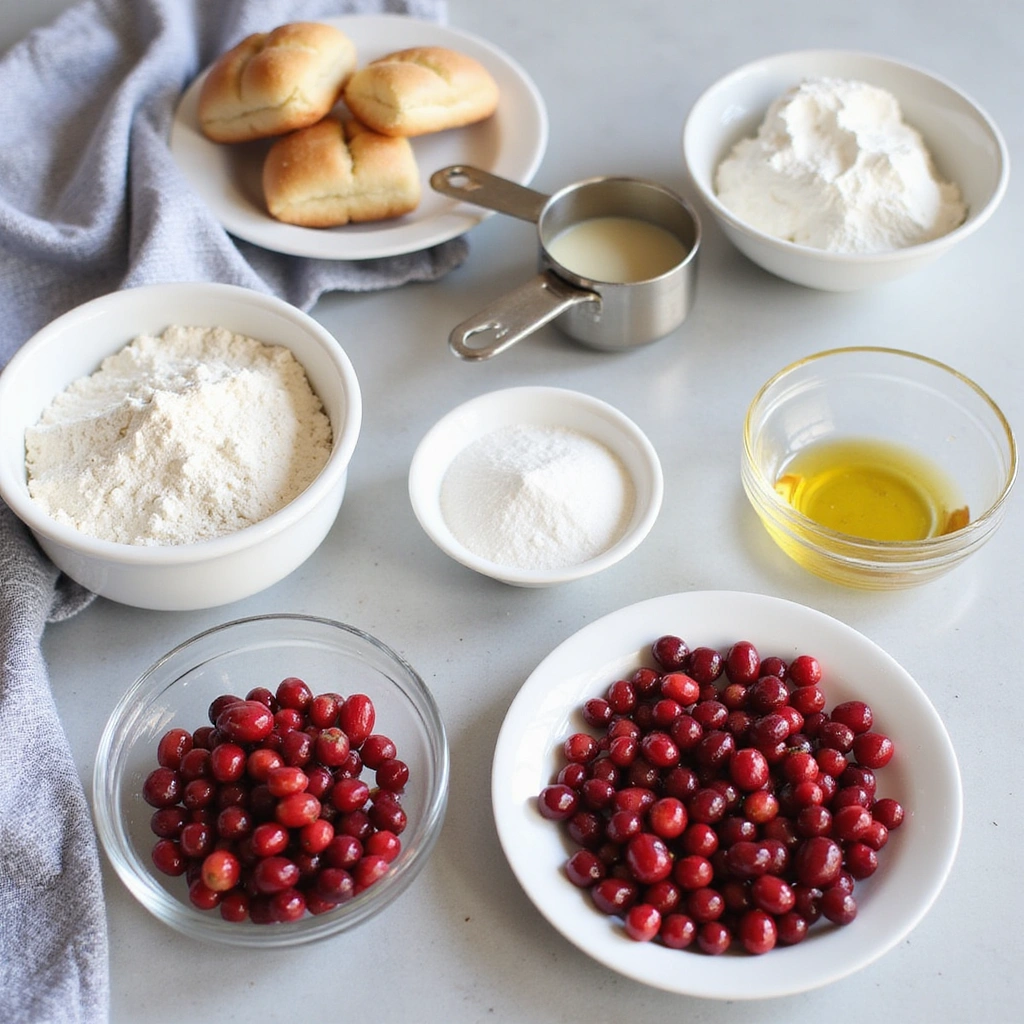
Gather all your ingredients on a clean countertop.
Ensure that your fresh cranberries are washed and halved for even distribution in the batter.
Measure out the dry ingredients accurately to avoid any mishaps during baking.
Prepping everything in advance helps streamline the baking process.
Step 2: Mix Dry Ingredients
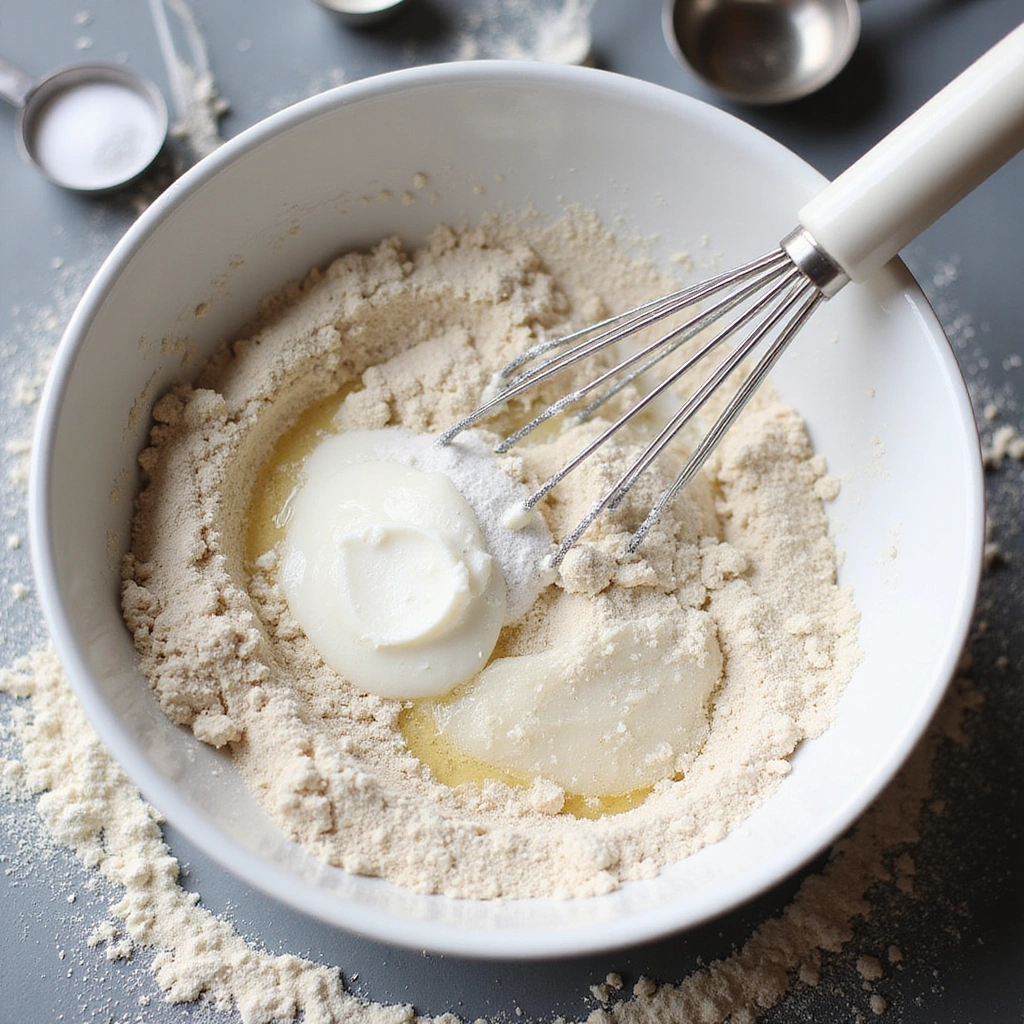
In a large mixing bowl, combine the flour, sugar, baking powder, baking soda, and salt.
Use a whisk to mix the dry ingredients until they are well blended.
This step is crucial to ensure even distribution of the leavening agents and sugar.
Make sure there are no lumps in the mixture for a smooth batter.
Step 3: Mix Wet Ingredients
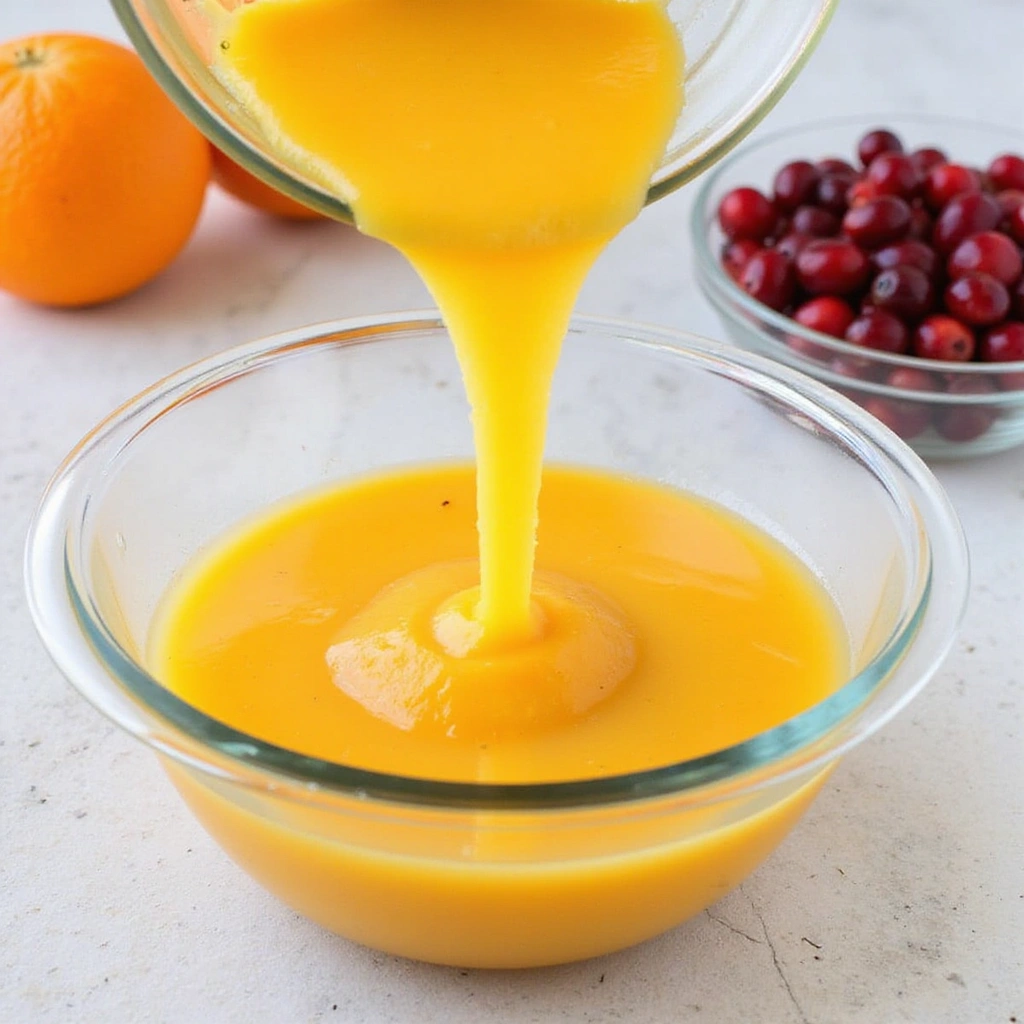
In a separate bowl, combine the orange juice and any liquid ingredients needed.
Stir them gently to ensure they are well mixed before adding to the dry bowl.
Using room temperature ingredients can help them blend more easily.
Set this bowl aside while you prepare the next step.
Step 4: Combine Mixtures
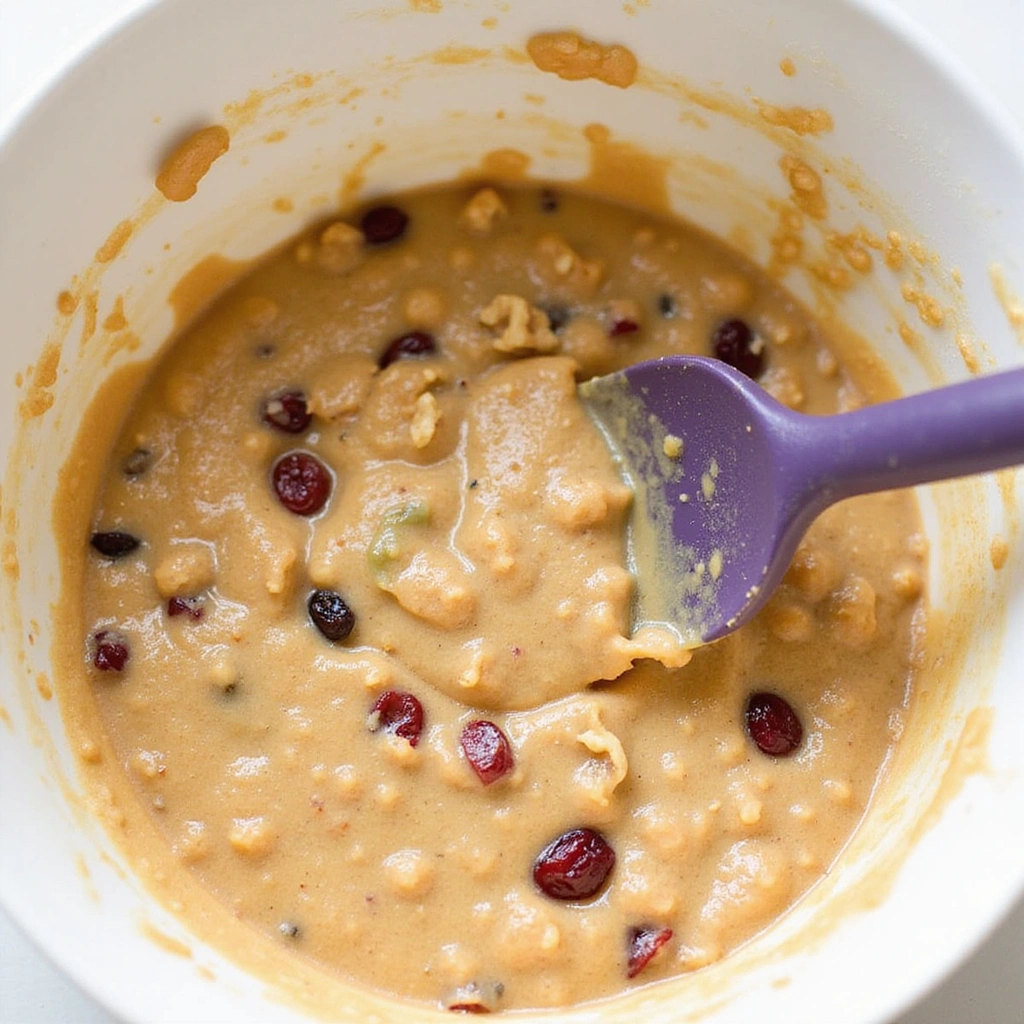
Pour the wet mixture into the dry ingredients bowl slowly.
Using a spatula, gently fold the mixtures together until just combined.
Be careful not to overmix; a few lumps are fine for a tender texture.
Add in the cranberries and walnuts at this stage.
Step 5: Prepare the Baking Pan
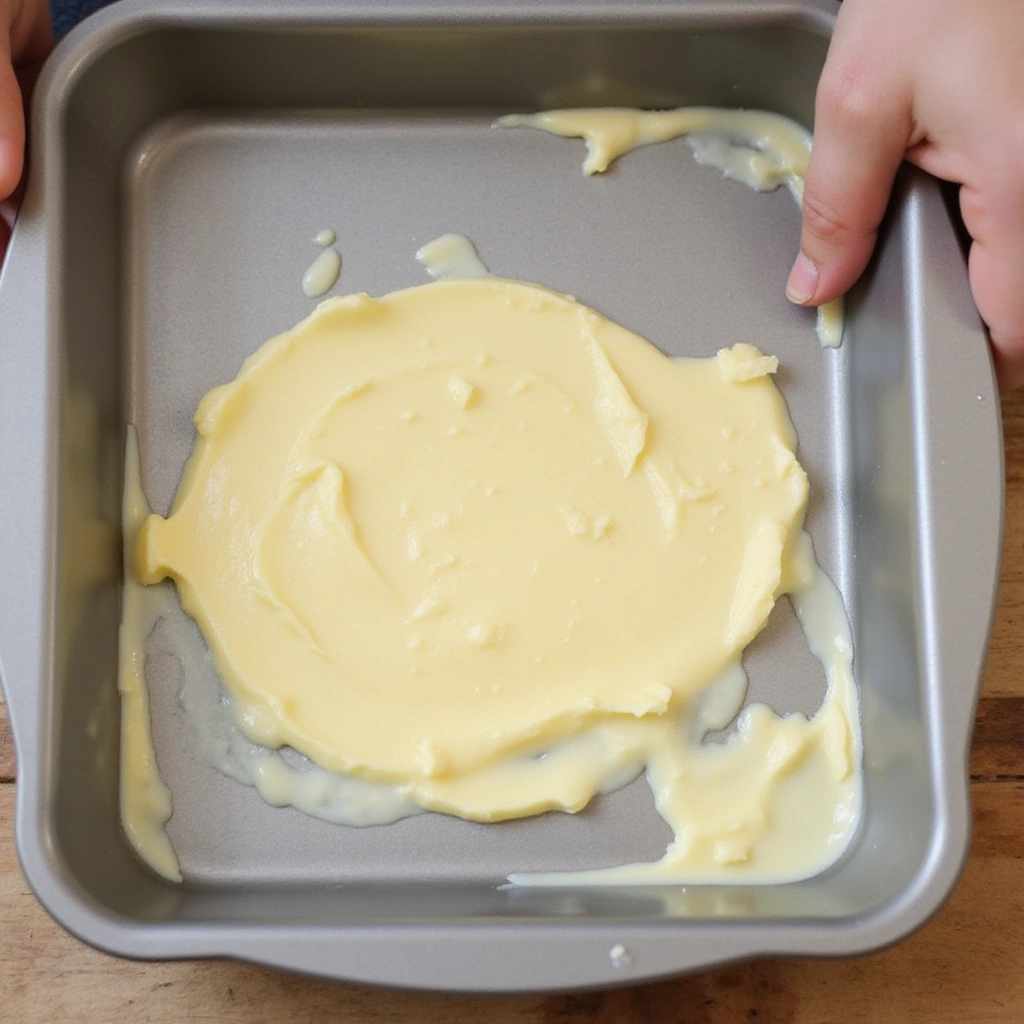
Preheat your oven to the recommended temperature of 350°F (175°C).
Grease your baking pan with butter or non-stick spray to prevent sticking.
You can also line it with parchment paper for easy removal.
Make sure to spread the grease evenly across all surfaces of the pan.
Step 6: Pour Batter into the Pan
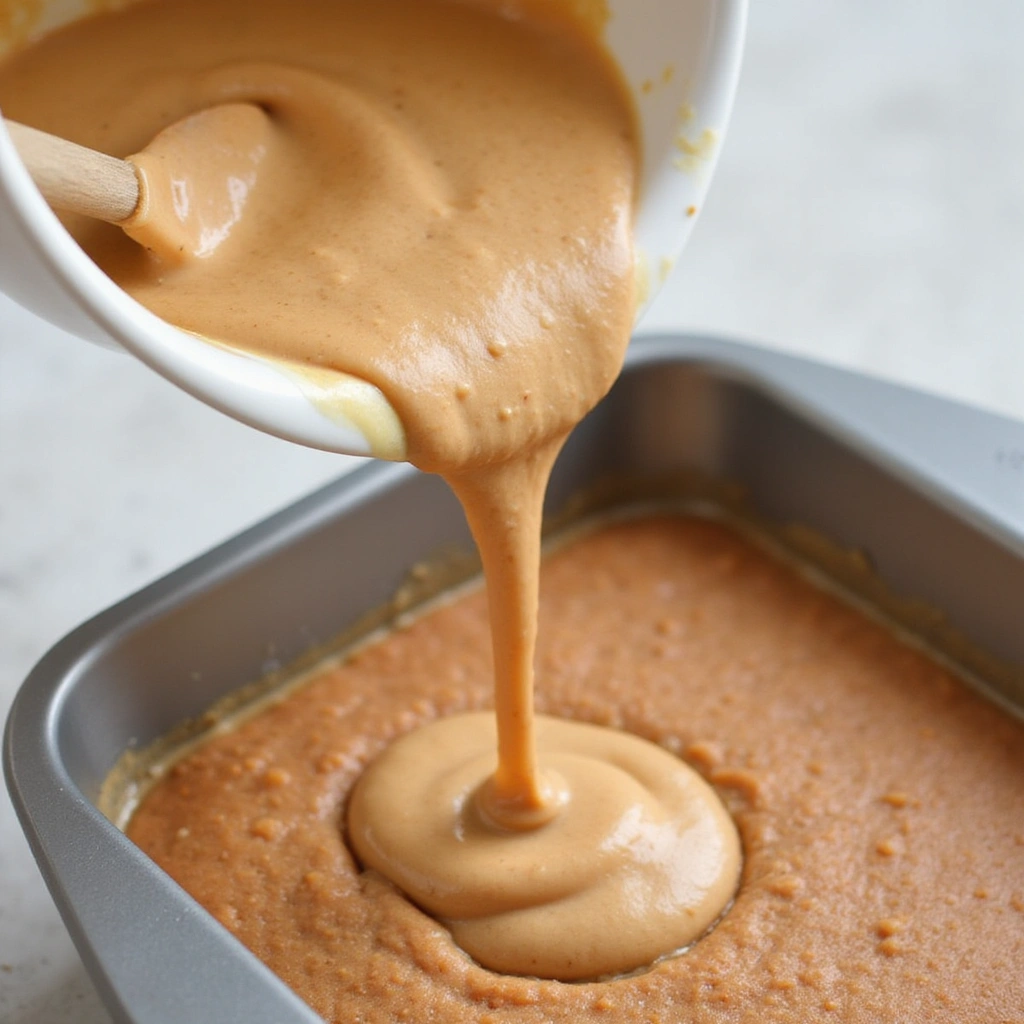
Pour the combined batter into the prepared baking pan.
Use a spatula to spread the batter evenly across the pan for uniform baking.
Ensure the batter reaches all corners of the pan.
This step is important for even cooking and browning.
Step 7: Prepare the Topping
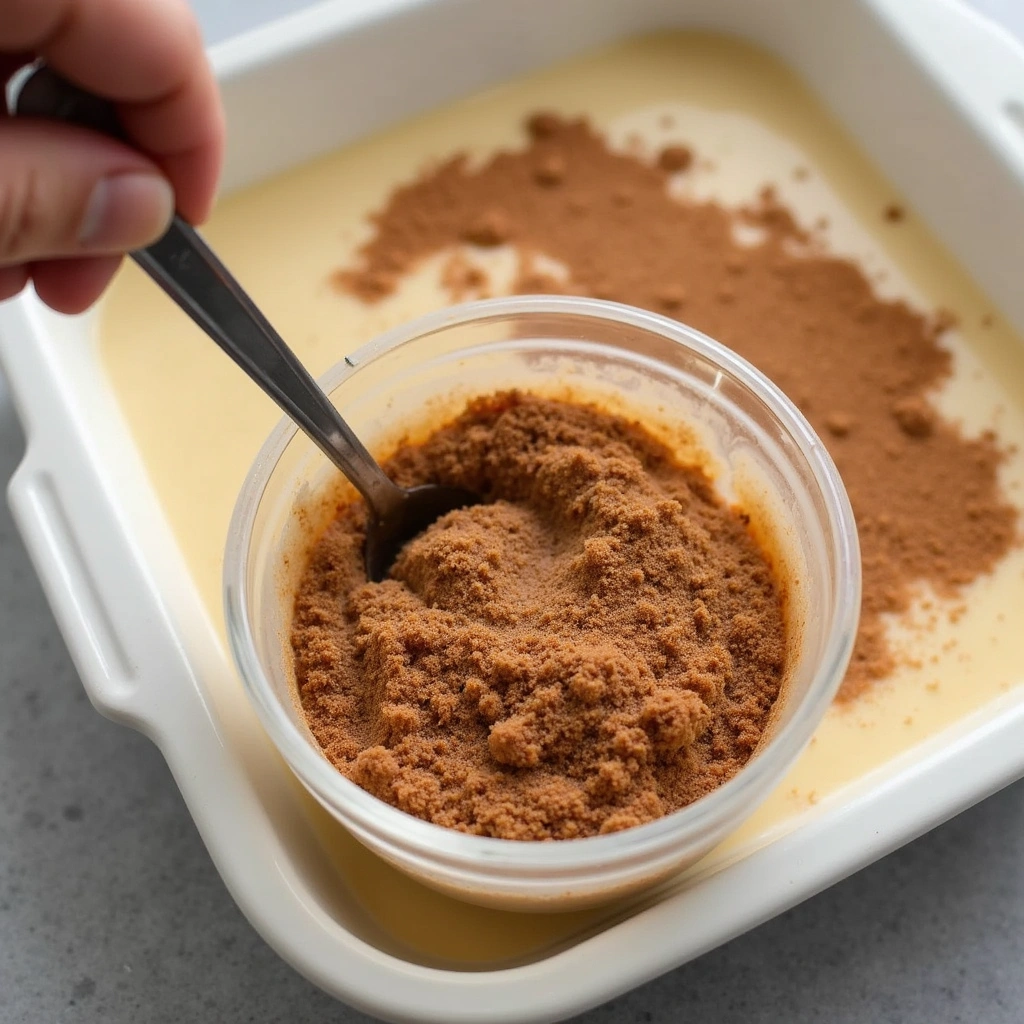
In a small bowl, mix together brown sugar and cinnamon for the topping.
Sprinkle this mixture evenly over the top of the batter in the pan.
This will create a delightful caramelized crust during baking.
Make sure to distribute it evenly for consistent flavor.
Step 8: Bake the Dish
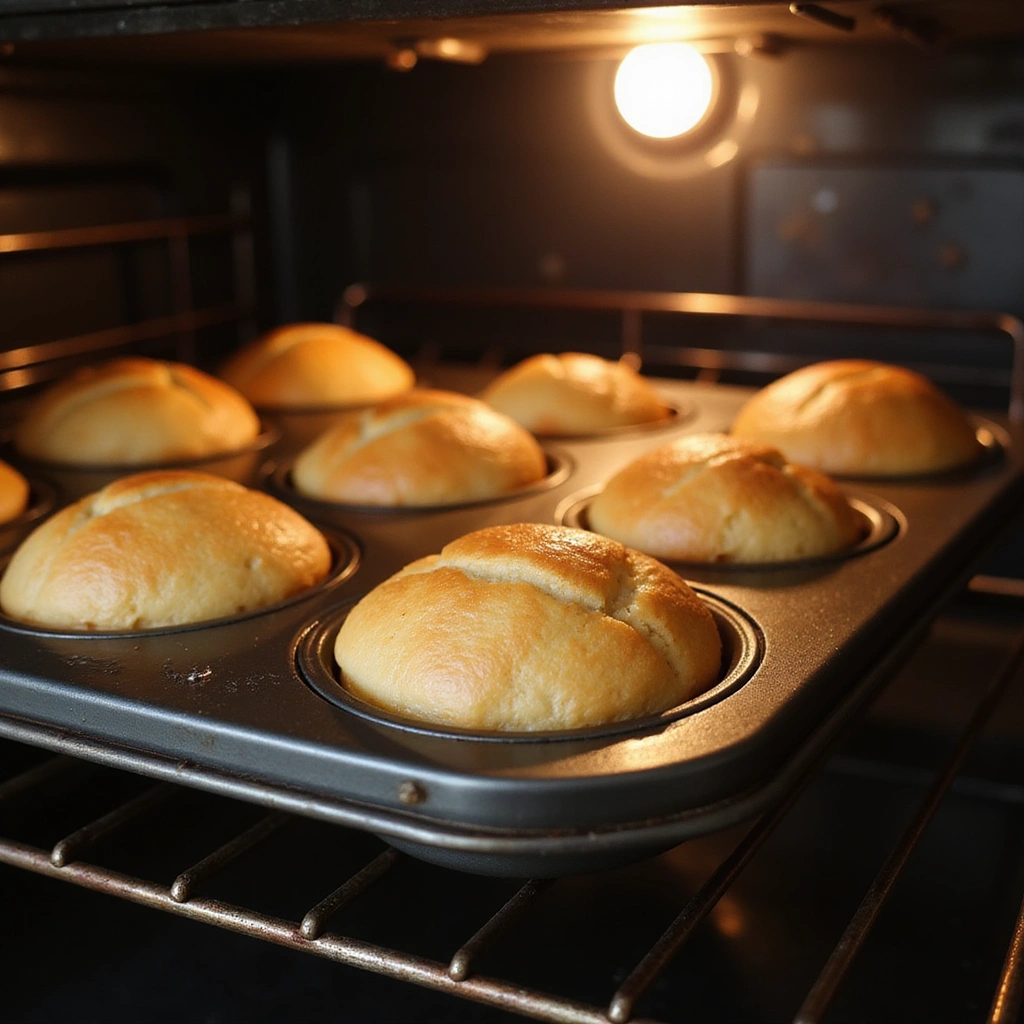
Place the baking pan into the preheated oven.
Bake for 45 minutes, or until a toothpick inserted in the center comes out clean.
Keep an eye on the color; it should turn a lovely golden brown.
Avoid opening the oven door too early to prevent collapsing.
Step 9: Cool and Serve
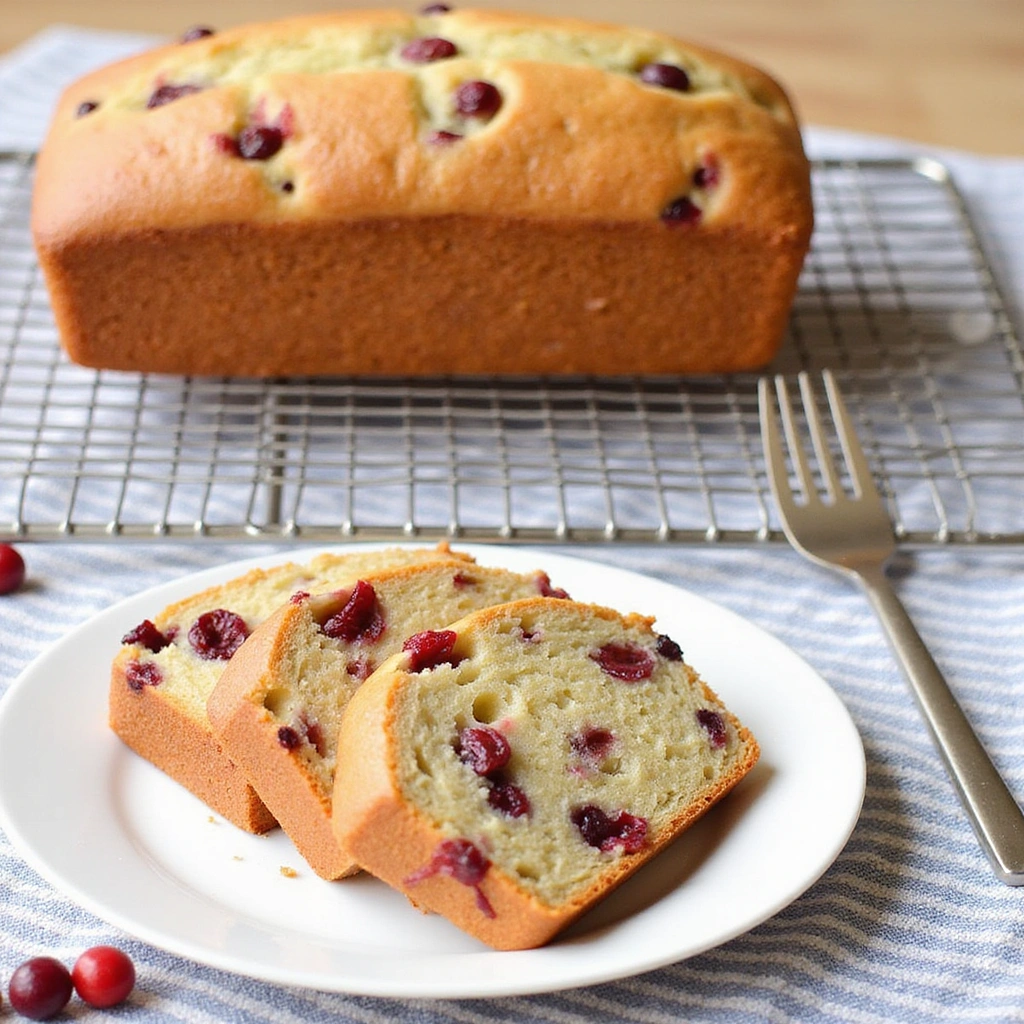
Once baked, remove the pan from the oven and allow it to cool for about 10 minutes.
Carefully invert the pan to transfer the baked goods to a cooling rack.
Let them cool completely before slicing to maintain moisture.
Serve warm or at room temperature for the best experience.
Critical Timing and Temperature Guide
Mixing Ingredients: Aim for a total mixing time of about 5 minutes for just the right consistency. Overmixing can lead to dense baked goods, so mix until ingredients are just combined.
Baking Time: The ideal baking time is around 45 minutes. Check for doneness with a toothpick; it should come out clean or with a few crumbs.
Cooling Time: Allow at least 10 minutes of cooling before inverting the pan. This step helps to set the structure and flavor of the baked goods.
Pro Tips for Fresh Cranberry Baking Recipes Bursting With Flavor
• Ingredient Selection: Use only fresh, firm cranberries for optimal flavor and texture. Avoid any that are mushy or discolored.
• Preparation Secret: Consider soaking cranberries in orange juice for 30 minutes before incorporating them into the batter to enhance their flavor.
• Temperature Management: Ensure ingredients are at room temperature; this helps create a smoother batter and better rise during baking.
• Texture Enhancement: For a more tender crumb, add a tablespoon of yogurt or sour cream to the batter.
• Flavor Layering: Enhance flavor with a pinch of nutmeg or a splash of vanilla extract in the batter for added depth.
• Make-Ahead Strategies: You can prepare the batter a day in advance and refrigerate it before baking to enhance flavors.
• Restaurant-Quality Finishing Touches: Drizzle a simple glaze made from powdered sugar and orange juice over the top for a professional finish.
• Equipment Optimization: Use a kitchen scale for precise measurements, especially for flour, ensuring consistent results.
Troubleshooting Common Issues
• Texture Too Dense: This can happen due to overmixing or too much flour. If you notice a dense texture, next time, mix just until combined and consider spooning flour into the measuring cup instead of scooping.
• Flavors Unbalanced: If your baked goods lack flavor, you may need to adjust the sugar or add more spices. Taste the batter before baking and make necessary adjustments.
• Too Dry: If the final product turns out dry, ensure you are measuring ingredients accurately and not overbaking. Check the oven temperature with a thermometer if necessary.
• Burnt Top: If the top is browning too quickly, cover it loosely with aluminum foil halfway through baking to prevent burning while allowing it to cook evenly.
• Sticking to the Pan: Always grease the pan thoroughly or use parchment paper. If it sticks, run a knife around the edges to help release it after cooling slightly.
Variations and Regional Differences
• New England Cranberry Bread: This version often includes spices like allspice or cloves, giving it a warm, cozy flavor profile typical of the region.
• Southern Cranberry Muffins: These muffins incorporate cornmeal for a delightful texture, often served with butter as a breakfast staple in Southern households.
• Vegan Cranberry Cake: A modern adaptation that substitutes eggs and dairy with plant-based alternatives, maintaining the tartness and sweetness of the original recipe.
• Modern Interpretations: Contemporary bakers might add superfoods like chia seeds or swap regular sugar for coconut sugar to create healthier versions.
Food Science Behind the Recipe
• Leavening Agents: Understanding how baking powder and baking soda work helps achieve the perfect rise. They create carbon dioxide bubbles that expand during baking, making the texture light and airy.
• Moisture Retention: Ingredients like orange juice and cranberries not only add flavor but also moisture. This moisture is crucial for preventing dryness during baking.
• Flavor Development: The Maillard reaction occurs during baking, giving the crust its brown color and rich flavor. This chemical reaction enhances the overall taste profile of your baked goods.
Frequently Asked Questions
What’s the most common mistake people make when preparing cranberry baked goods? The most common mistake is overmixing the batter, which can lead to dense and tough baked goods. Mix just until combined for the best texture.
Can I prepare components of this dish in advance? Yes, you can prepare the batter a day ahead and refrigerate it. Just stir gently before baking to recombine.
How do I adapt this recipe for dietary restrictions? To make it gluten-free, substitute all-purpose flour with a gluten-free blend. Adjust the liquid slightly as needed.
What’s the best way to store and reheat leftovers? Store leftovers in an airtight container at room temperature for up to 2 days or refrigerate for up to a week. Reheat in a microwave for a few seconds or in a preheated oven at 350°F until warmed through.
Can I freeze this dish? Yes, you can freeze it after baking. Wrap it tightly in plastic wrap and foil. Thaw in the refrigerator overnight before reheating.
What wine or beverages pair best with this dish? A light-bodied white wine, like Sauvignon Blanc, pairs well with the tartness of cranberries. For a non-alcoholic option, consider a sparkling apple cider.
How can I scale this recipe up for a crowd? To scale up, simply multiply the ingredient amounts by the number of servings needed, and use a larger baking pan or multiple pans as necessary.
What side dishes complement this recipe best? Creamy coleslaw or a fresh green salad with citrus dressing pairs nicely, balancing the sweetness of the cranberries.
How do professional chefs elevate this dish for restaurant service? They often add unique garnishes like candied cranberries or a dollop of whipped cream to enhance presentation and flavor.
Serving and Presentation Guide
• Traditional Presentation: Serve slices of cranberry bread on a wooden cutting board, garnished with fresh cranberries and a dusting of powdered sugar for a rustic look.
• Modern Plating Ideas: Create individual servings on white plates with a drizzle of orange glaze and a sprig of mint for an elegant touch.
• Accompaniment Suggestions: Pair with a small bowl of whipped cream or a scoop of vanilla ice cream for a delightful dessert experience.
• Special Occasion Presentation: For festive gatherings, arrange slices on a tiered cake stand, adding decorative elements like edible flowers or holly for a seasonal touch.
Conclusion
Trying out fresh cranberry baking recipes can be a delightful experience, bringing warmth and flavor to your kitchen.
These recipes not only highlight the tartness of cranberries but also create memories that will last a lifetime.
I encourage you to gather your loved ones and enjoy the baking process together, celebrating the flavors of the season.
